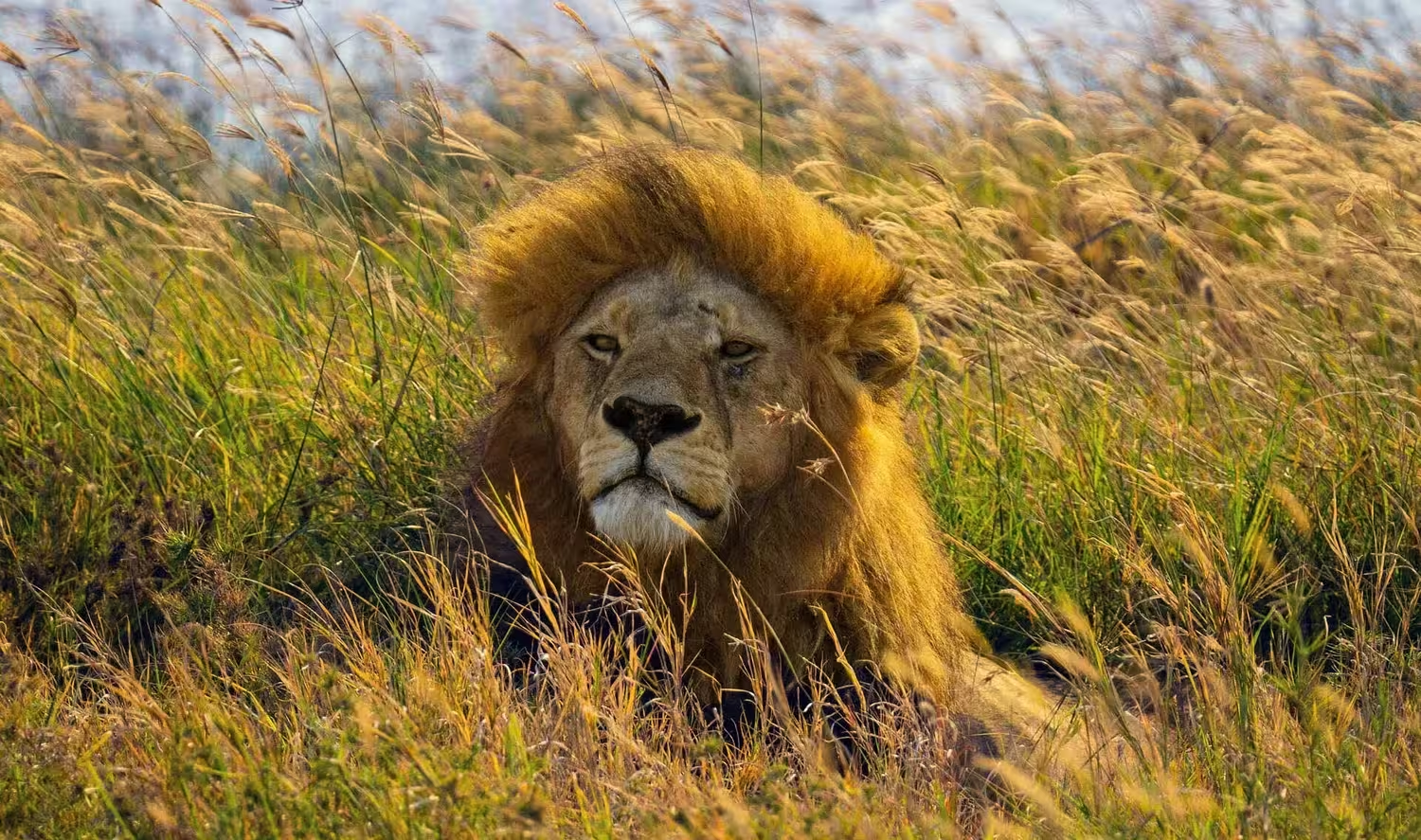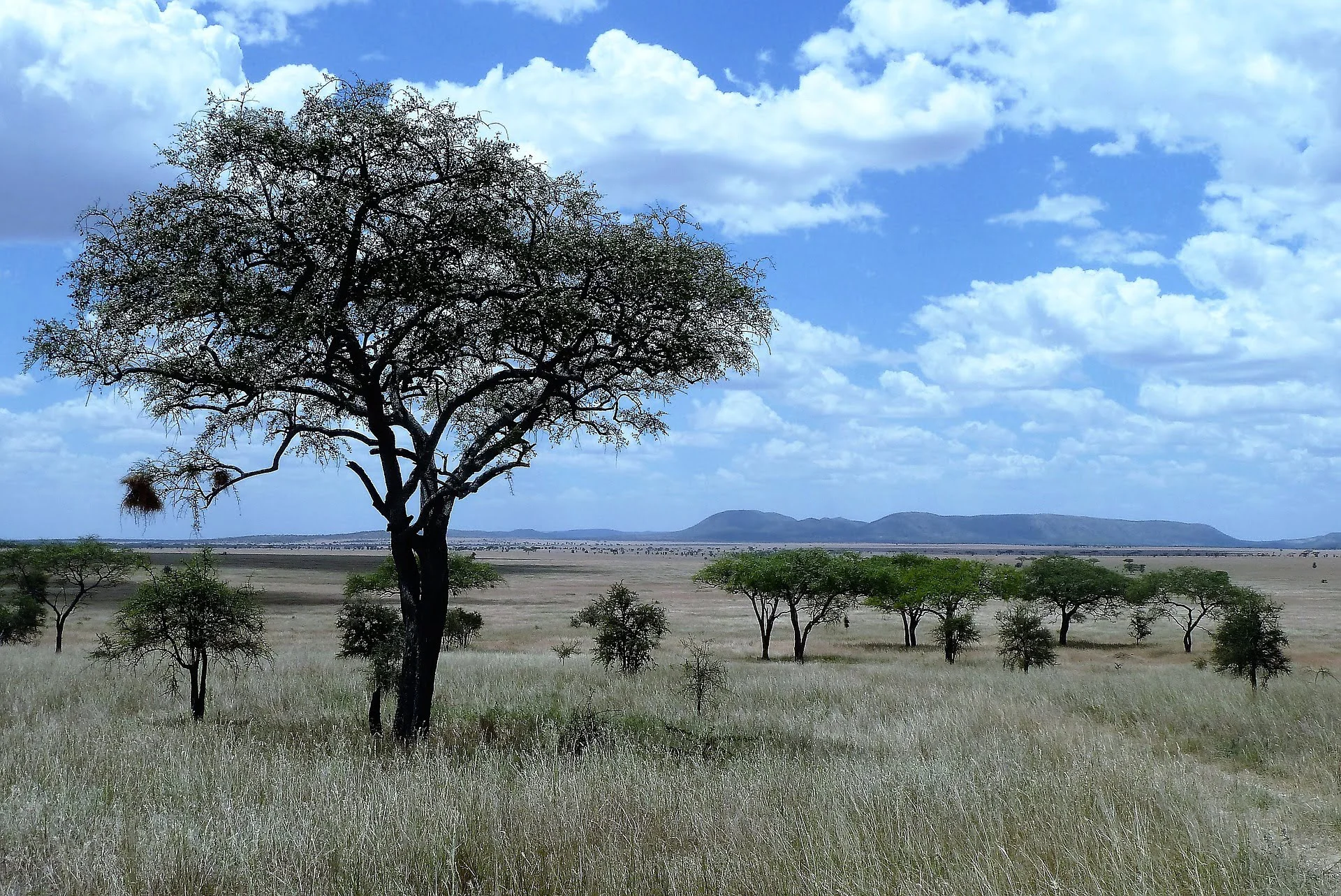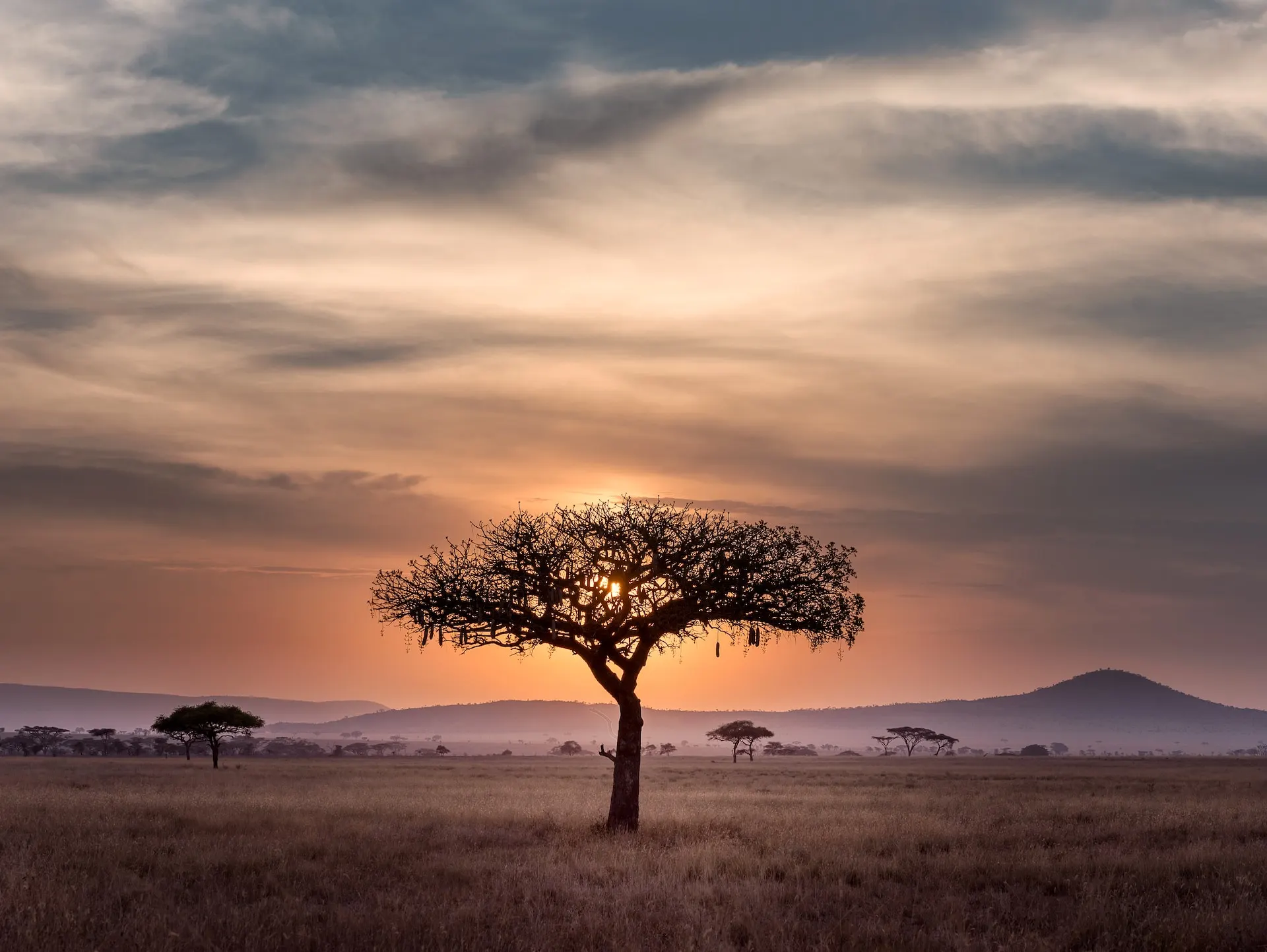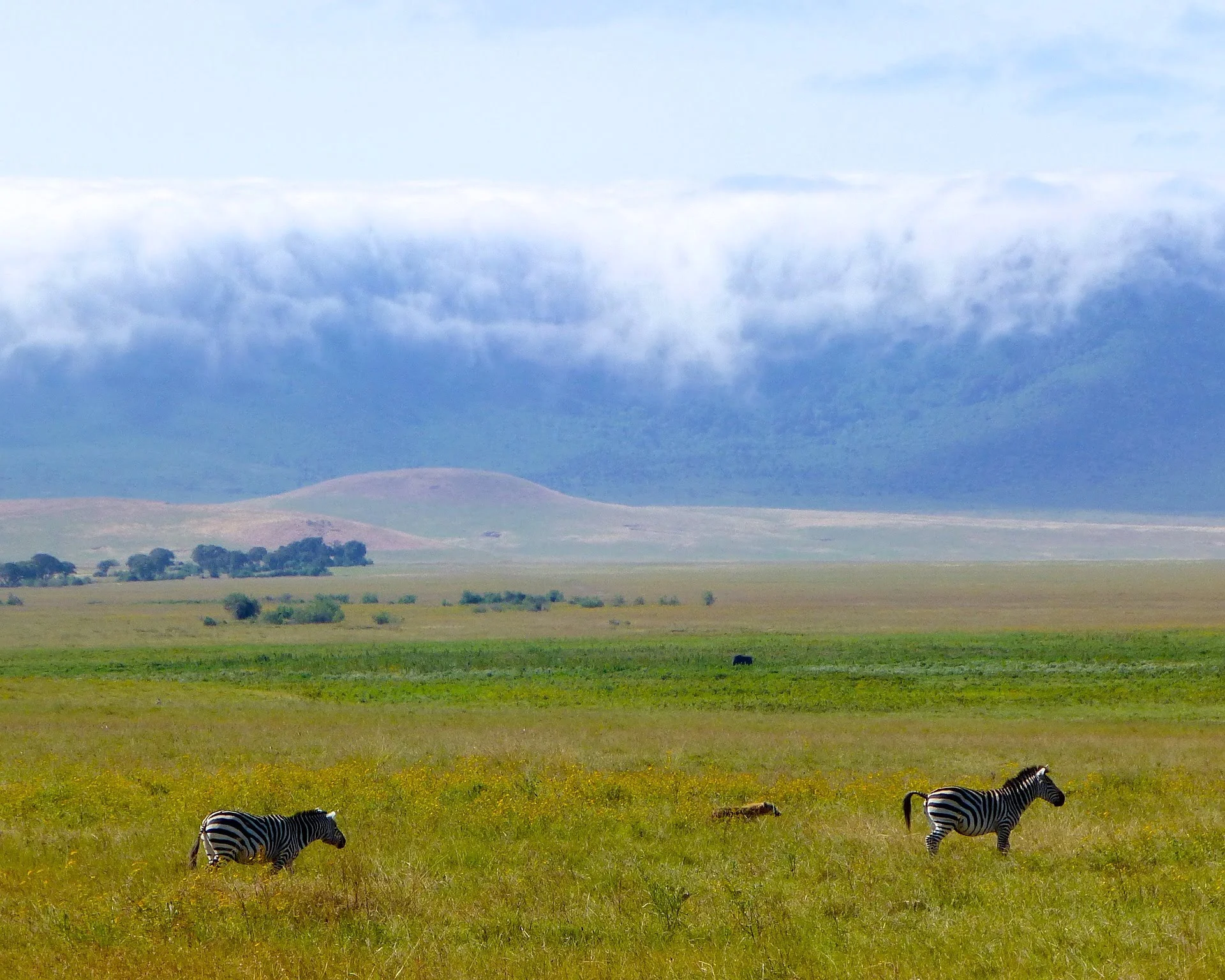Serengeti National Park
Serengeti National Park
Serengeti National Park, in northern Tanzania, covers a massive 14,763 square kilometers (5,700 sq mi). It is a vast land of untouched savanna. This special place was created in 1940 to protect its natural beauty.
One of the park’s main attractions is the incredible wildebeest migration. Every year, more than 1.5 million wildebeest, plus hundreds of thousands of zebras and gazelles, travel across the Serengeti – Mara area in search of food and water. It is a breathtaking sight that draws visitors from all over the world.
But the Serengeti has much more to offer than the migration. It is home to a wide range of animals, like the Big Five (African lions, African leopards, African elephants, rhinos, Cape Buffalo), giraffes, cheetahs, and hyenas. It is also a place of great historical significance. You can find important archaeological sites, like Olduvai Gorge, where some of the earliest human fossils were discovered.
Serengeti National Park Safari Tours
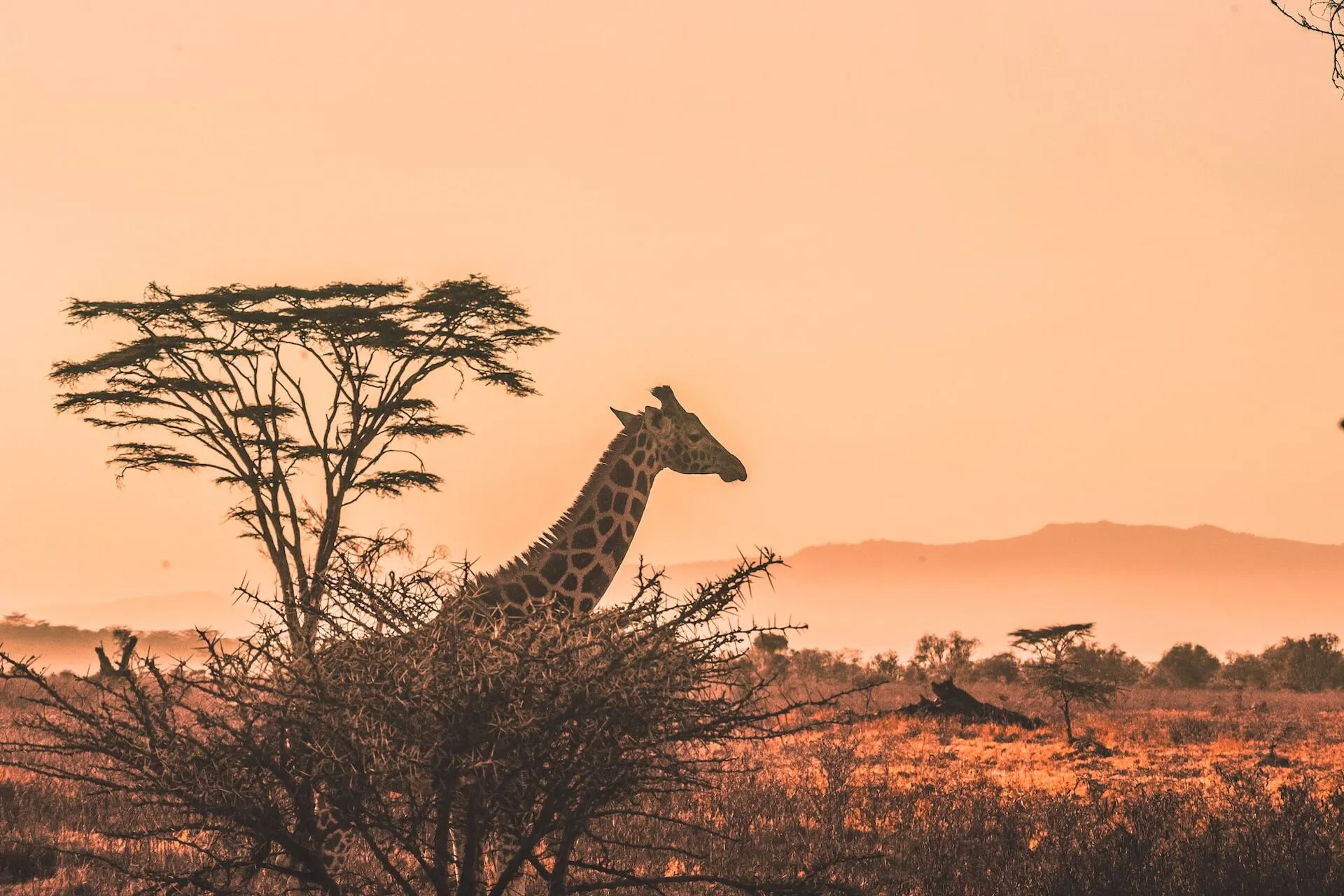
10 Days
Masai Mara & Serengeti Safari
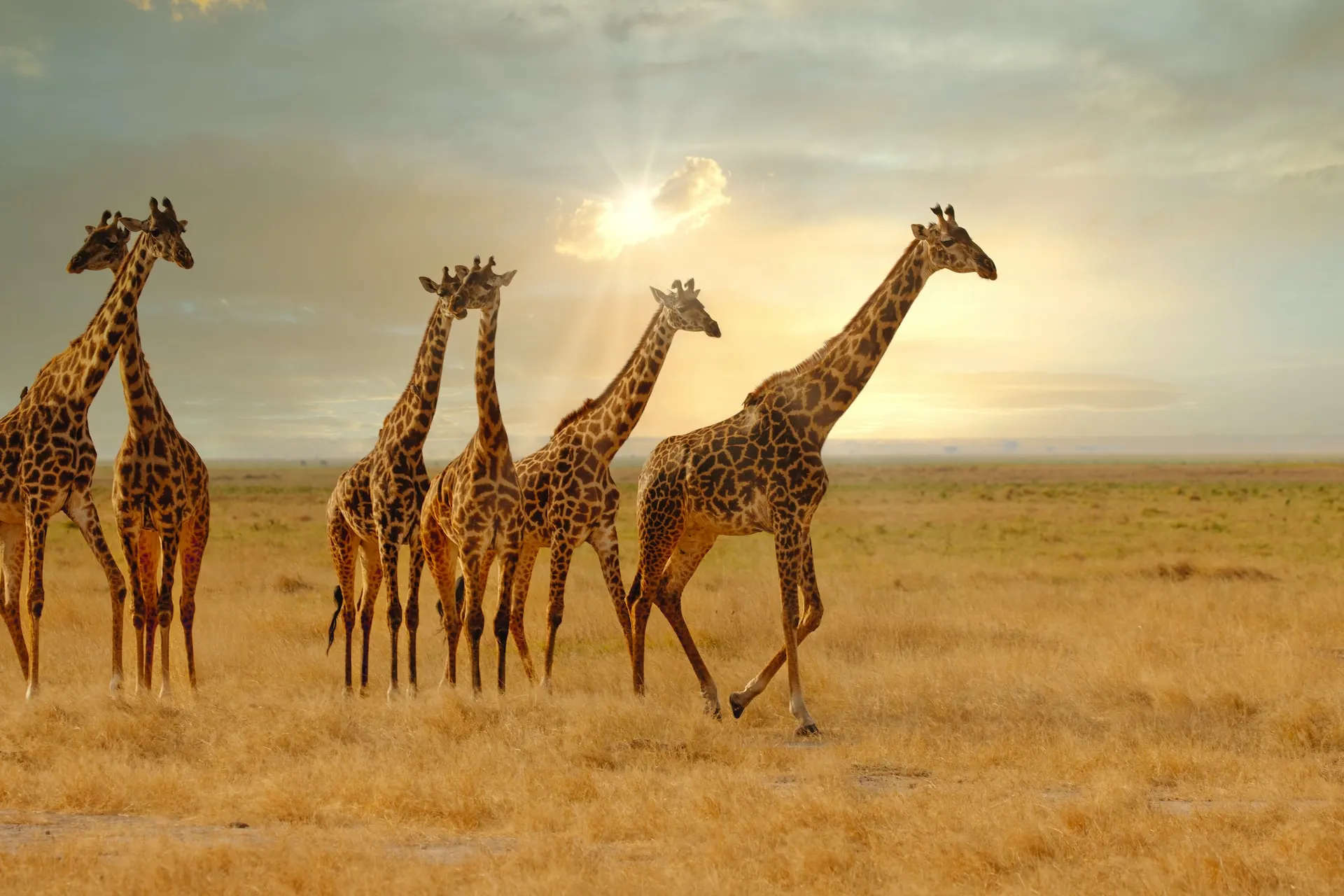
3 Days
Serengeti Safari
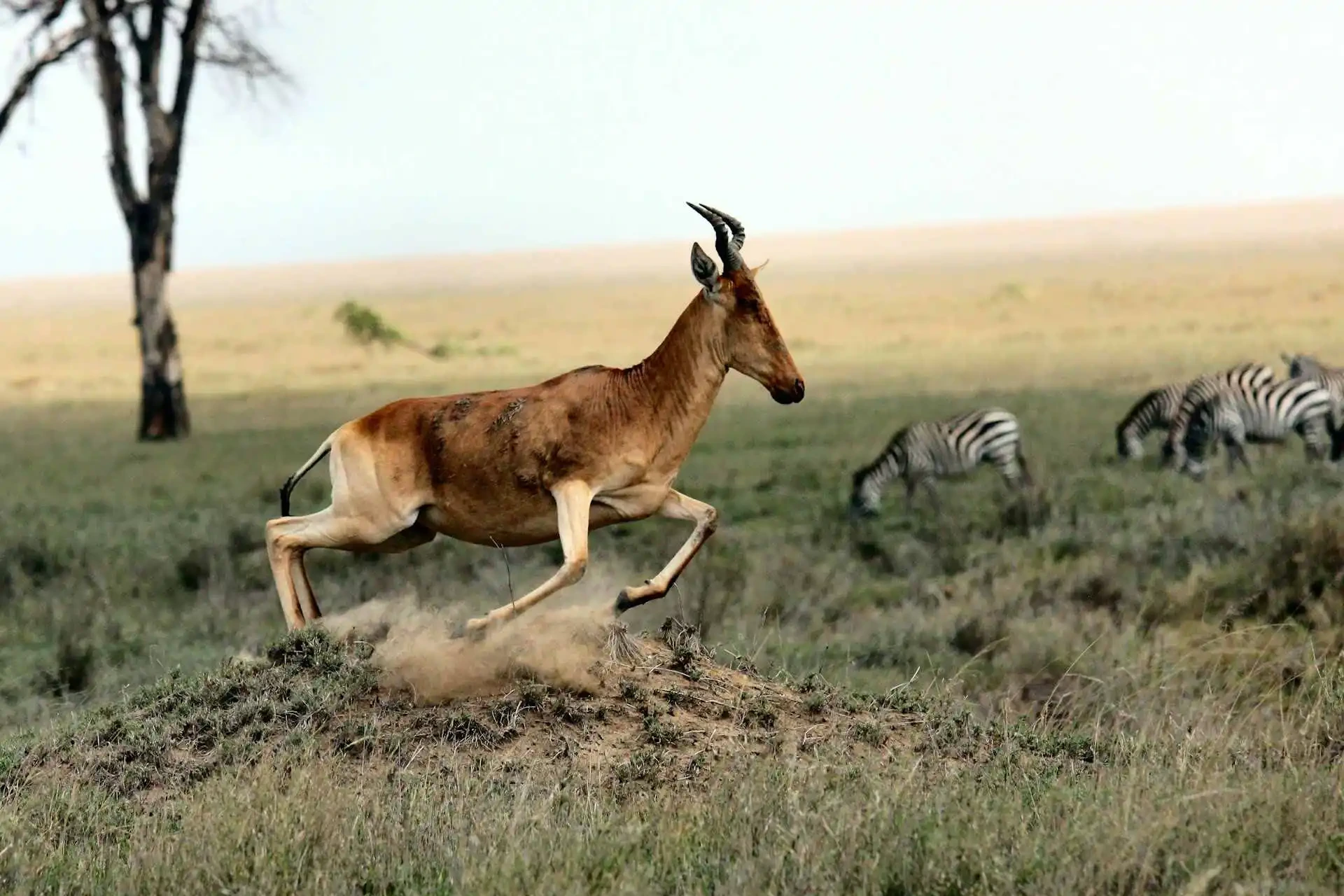
3 Days
Serengeti & Ngorongoro Safari
Wildlife in Serengeti

It is home to a vast variety of animals, including the Big Five (lion, leopard, elephant, rhino, and buffalo), plus cheetahs, giraffes, zebras, wildebeests, and more.
Besides the great migration, the Serengeti hosts other important wildlife events. It is a key breeding area for lions, and you can often spot lion cubs playing and learning from their mothers. The park is also a good place to see leopards, which are usually shy but can sometimes be seen resting in trees or hunting at night.
In addition to the big animals, the Serengeti is a home for various birds and reptiles. The park is home to over 500 bird species, including the impressive ostrich, kori bustard, marabou stork and secretary bird. You will also find the massive Nile crocodil and various other reptiles like snakes, lizards, and tortoises. It’s a place of immense biodiversity and a fantastic safari experience.
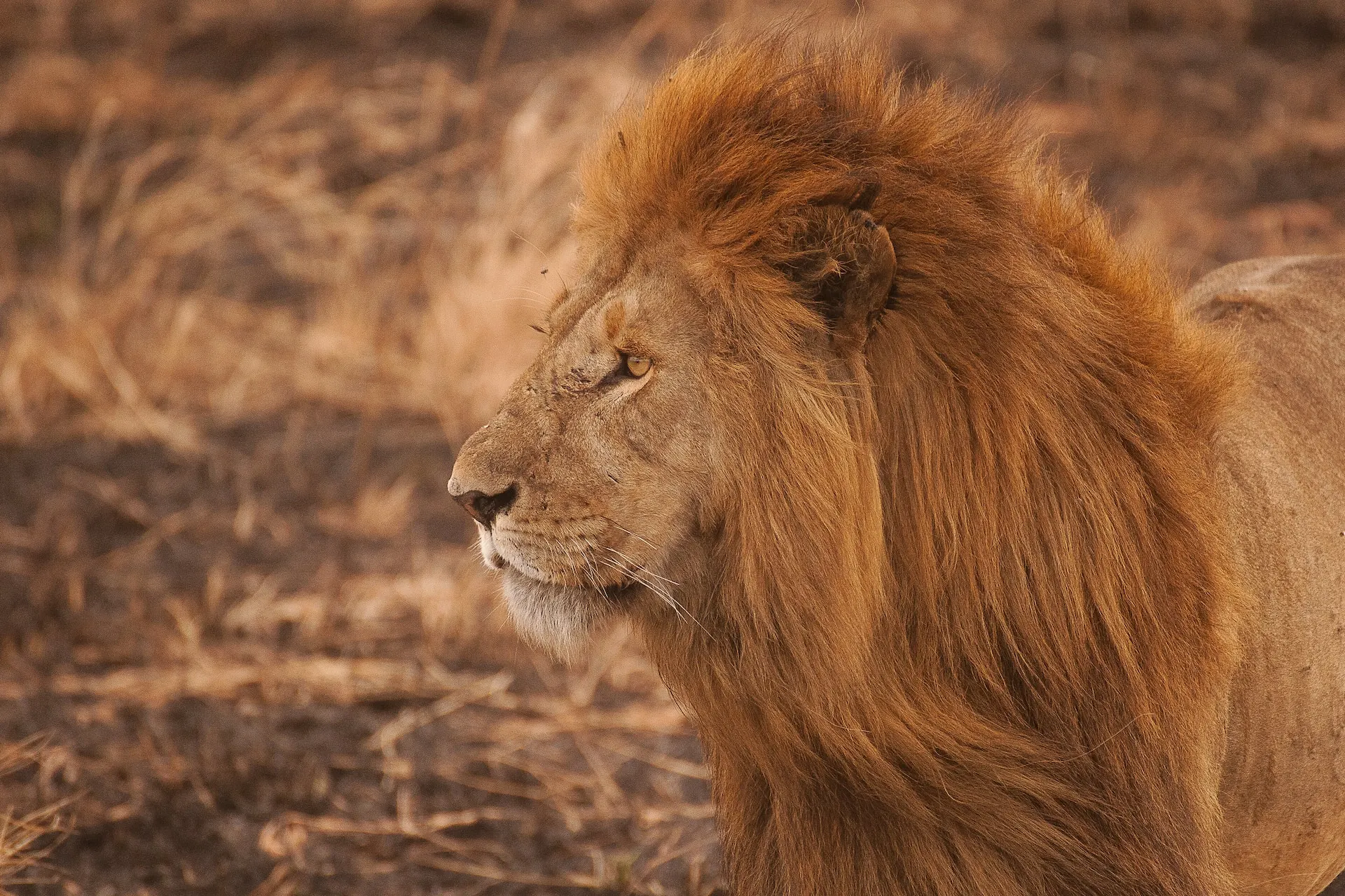
Mammals
- African Lion
- African Leopard
- African Elephant
- Black rhinoceros
- Cape buffalo
- Giraffe
- Zebra
- Wildebeest
- Hippopotamus
- Spotted hyena
- Cheetah

Birds
- Ostrich
- Kori bustard
- Marabou stork
- Secretarybird
- African spoonbill
- Lilac-breasted roller
- Grey crowned crane
- Maasai ostrich
- Red-billed hornbill
- Von der Decken’s hornbill
- Hammerkop
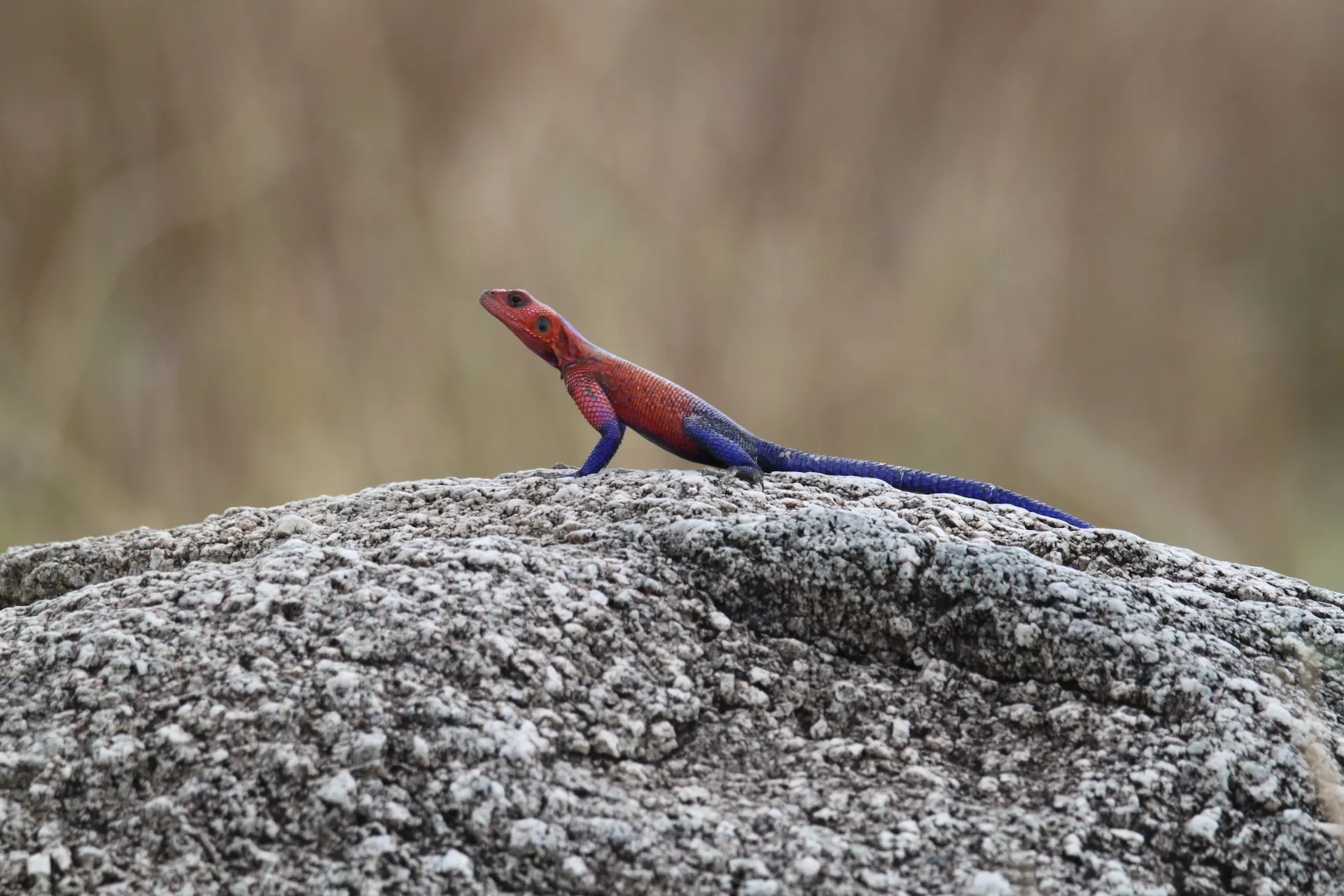
Reptiles
- Nile crocodile
- African rock python
- Leopard tortoise
- Savannah monitor
- Agama lizard
- Chameleon
- Puff adder
- Black-necked spitting cobra
- Green mamba
- Boomslang
- Rhinoceros tickbird
Best Time to Visit Serengeti National Park
The Serengeti National Park is an ideal destination for your visit during the dry season, which spans from June to October. This period offers pleasant, sunny weather, creating a comfortable environment for exploration. Additionally, the animals congregate around the remaining water sources, increasing your chances of spotting them during exciting game drives.
Furthermore, the dry season marks the height of the incredible wildebeest migration. During this time, the herds embark on their northern journey through the Serengeti in search of greener pastures, providing a spectacular opportunity to witness their dramatic river crossings, particularly at the Mara River. This period promises an exhilarating experience for wildlife enthusiasts and safari-goers, making your Serengeti adventure truly unforgettable.

Prime Times for Serengeti’s Natural Events
Wildebeest Migration
(June and July)
The wildebeest migration is a breathtaking event where over 1.5 million wildebeests, along with zebras and gazelles, travel in search of food. The best time to see this is during June to October.
Wildebeest Calving
(January to February)
In this time wildebeests gather in the southern Serengeti to give birth. It is a time of new life, but also when predators are active. Visit during these months to see the baby wildebeest.
Lion Breeding
(May to June)
May and June mark the time when lionesses give birth to their cubs. The Serengeti comes alive with playful lion cubs in July or August, offering a heartwarming and memorable wildlife spectacle.
Birdwatching
(November to May)
The Serengeti is a haven for birdwatchers, with over 500 bird species. The best time for birdwatching is during the wet season, from November to May, when the birds are more dispersed and easier to spot.
Serengeti Climate
In the Serengeti National Park, you will find a tropical savanna climate with two main seasons.
The dry season, running from June to October, is characterized by sunny and warm weather, with temperatures ranging from 13°C to 27°C. Nights can be cool, especially at higher elevations, and there’s hardly any rain during this time.
On the other hand, the wet season, from November to May, brings more variable weather, including afternoon thunderstorms. Average temperatures range from 14°C to 26°C. This season makes the landscape lush and green, and animals are more spread out.The Serengeti’s relatively high elevation keeps the climate cooler than many other parts of Tanzania, making it a comfortable destination, especially during the dry season.
Serengeti climate chart
| Month | Jan | Feb | Mar | Apr | May | Jun | Jul | Aug | Sep | Oct | Nov | Dec |
|---|---|---|---|---|---|---|---|---|---|---|---|---|
| Min (°C) | 14 | 15 | 16 | 15 | 14 | 13 | 12 | 13 | 14 | 15 | 15 | 14 |
| Max (°C) | 25 | 26 | 27 | 25 | 25 | 24 | 23 | 24 | 26 | 27 | 26 | 25 |
How to Reach Tanzania
There are several ways to reach Tanzania, with the most common being flying into one of the country’s international airports. These airports include Julius Nyerere International Airport (DAR) in Dar es Salaam, Kilimanjaro International Airport (JRO) in Arusha, and Mwanza International Airport (MWZ).
You can easily access Tanzania from major cities worldwide through well known airlines such as Emirates, Qatar Airways, Turkish Airlines, Air India, IndiGo, Ethiopian Airlines, KLM Royal Dutch Airlines, Air France, British Airways, and Lufthansa. These airlines offer flights from various prominent airports around the world and ensure a convenient and worry-free journey to Tanzania.
Getting to the Serengeti in Tanzania
Once you are in Tanzania, your journey to the Serengeti National Park begins. You have a couple of options, flying or driving. If you prefer a quick and easy route, domestic flights can take you to the Serengeti’s own airstrips, like Seronera Airstrip or Kogatende Airstrip. From there, your safari adventure is just a short ride away. But if you enjoy scenic road trips, you can take a drive through Tanzania’s beautiful countryside. Experienced guides will make sure you have a memorable and educational journey.


By Air
There are several airlines that offer flights to the Serengeti National Park from the major airports in Tanzania. The flight time from Dar es Salaam to Seronera Airport (SRQ), which is the closest airport to the Serengeti National Park, is about 1 hour and 30 minutes.

By Road
Reaching the Serengeti National Park from major cities in Tanzania is also an option. The drive from Dar es Salaam to Seronera Airport takes approximately 6 hours, which offers a road journey that allows you to soak in the scenic beauty along the way.
Ready for an unforgettable Serengeti safari experience? Book your adventure with us today!

